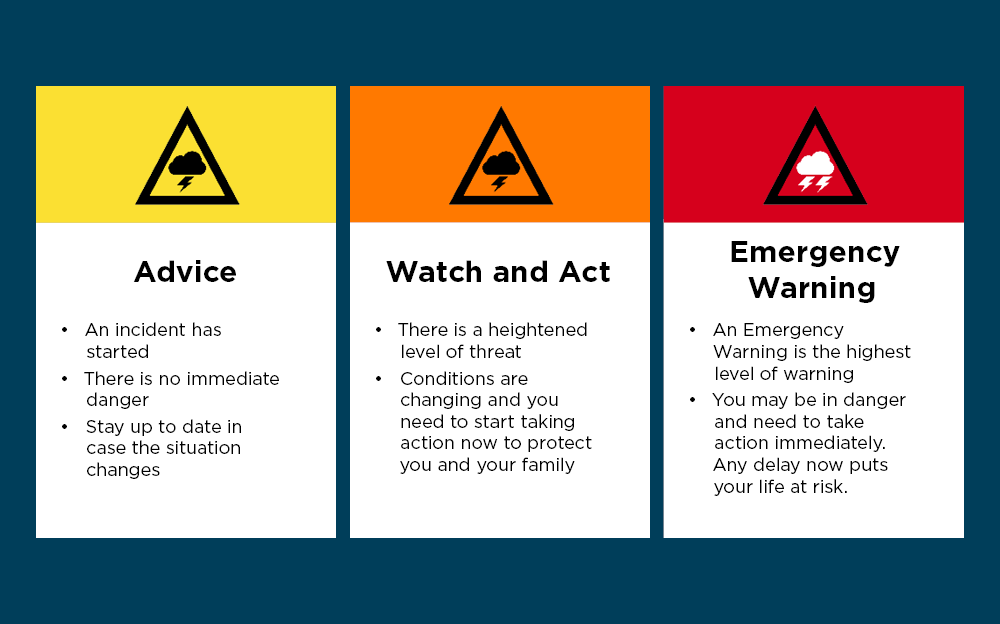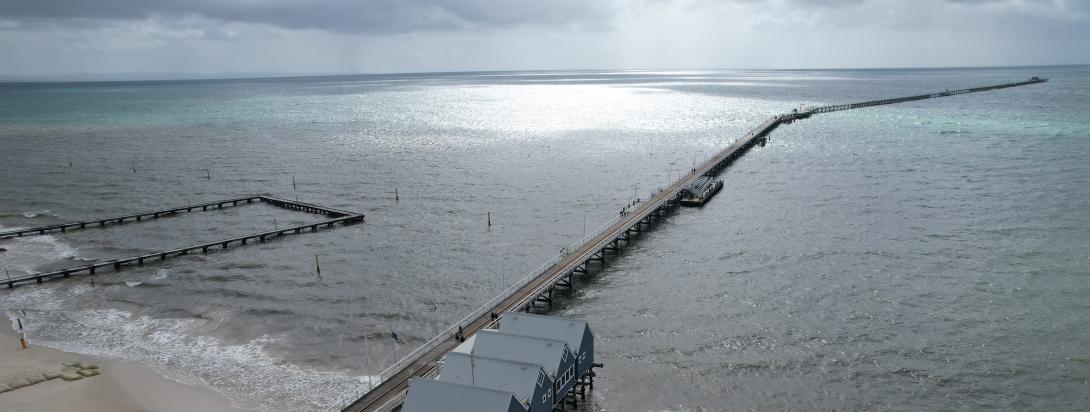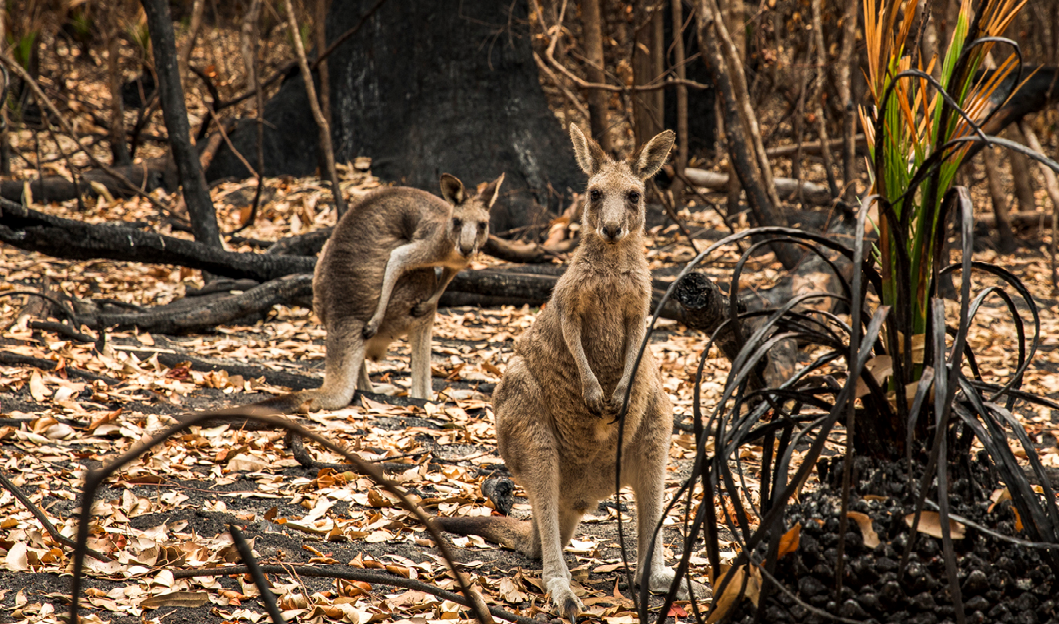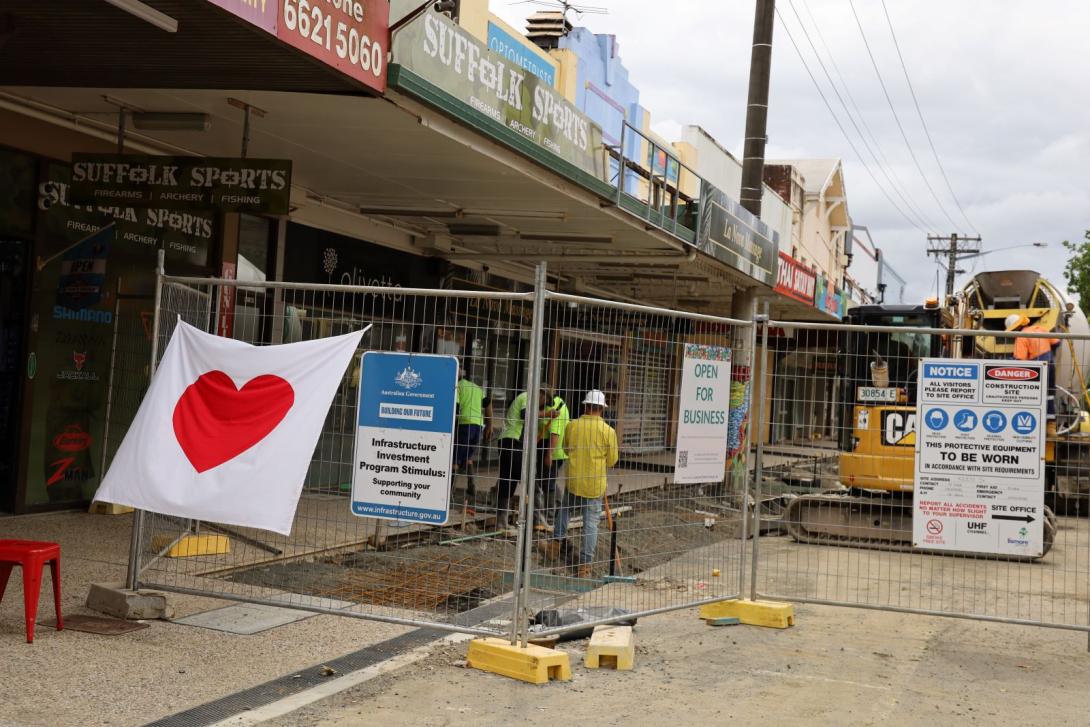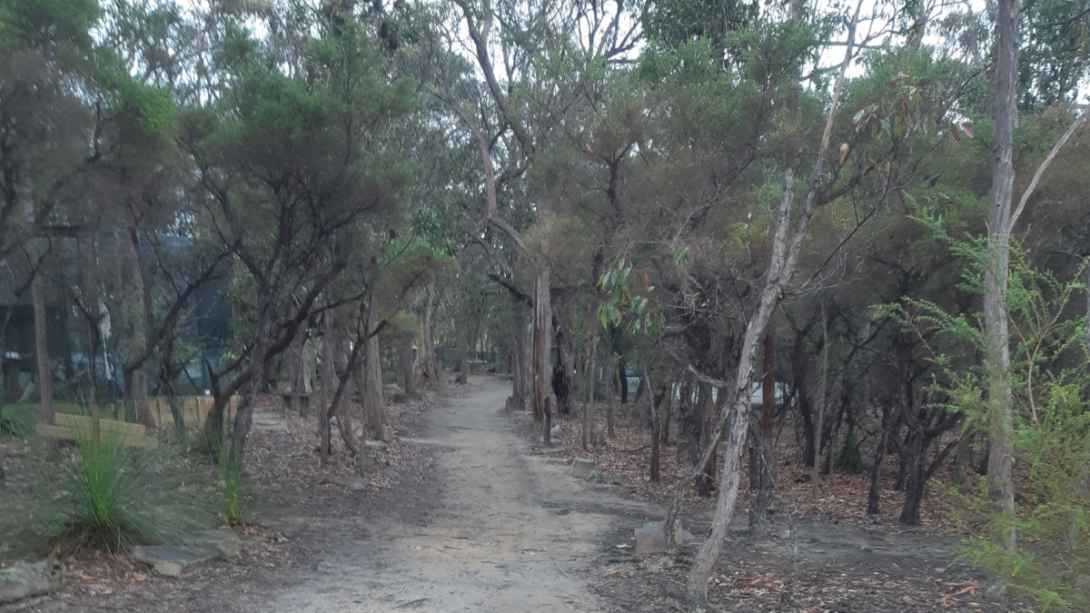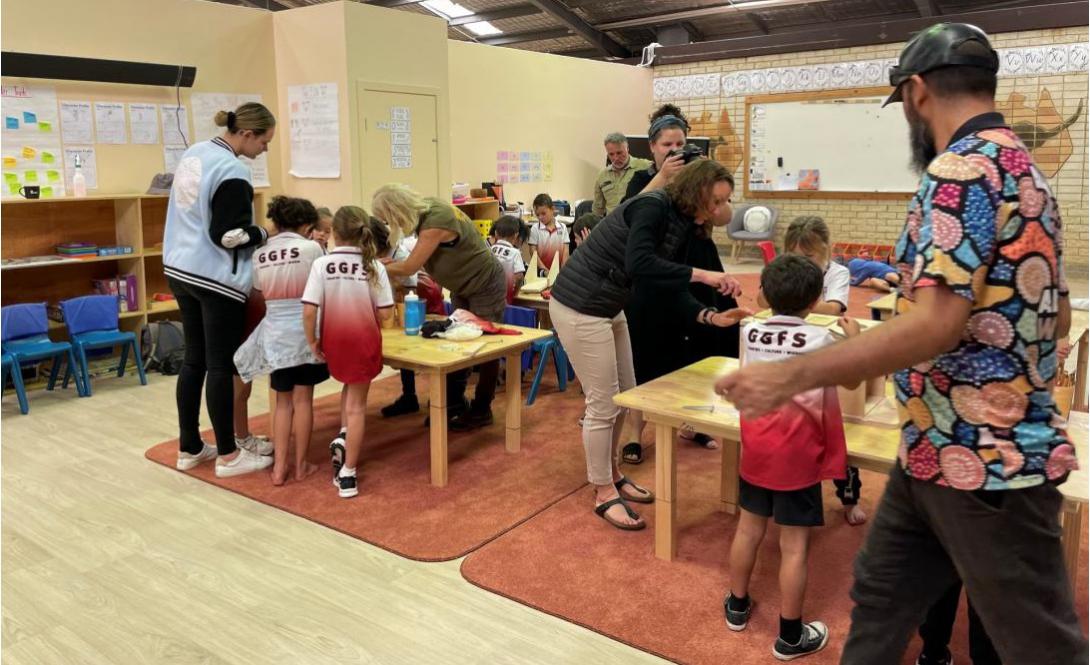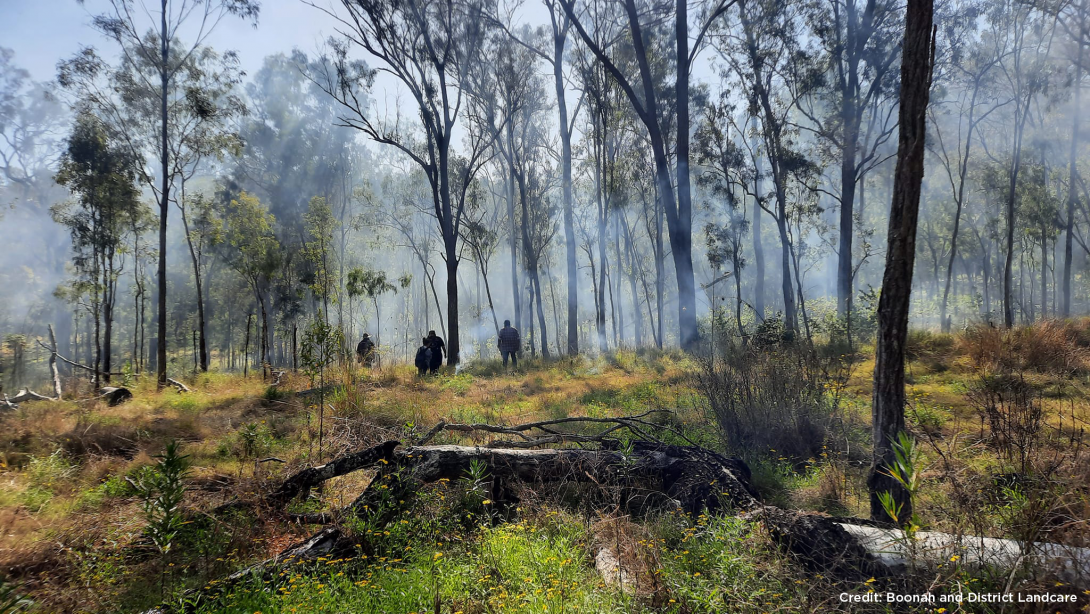An emergency or disaster can happen no matter where you are. This International Day for Risk Reduction, we take the opportunity to showcase how we’re helping Australians in times of emergency where they live, wherever they are in Australia.
Australian Warning System
The Australian Warning System (AWS) was established in 2021 to provide consistent warnings for emergencies like bushfire, flood, storm, extreme heat and severe weather.
We’ve supported the implementation of the AWS through funding to the Australasian Fire and Emergency Service Authorities Council (AFAC) for a national education campaign to raise public awareness of the system and coordinate delivery with the states and territories.
Up until recently, there have been different warning systems for different hazard types across Australia. This new national approach provides consistency in messaging regardless of the emergency or location and includes three warning levels and a set of icons to show incidents on websites and apps, supported by calls to action.
The three warning levels are:
- Advice: An incident has started. There is no immediate danger. Stay up to date in case the situation changes.
- Watch and Act: There is a heightened level of threat. Conditions are changing and you need to start taking action now to protect you and your family.
- Emergency Warning: An Emergency Warning is the highest level of warning. You may be in danger and need to take action immediately. Any delay now puts your life at risk.
Australia’s Review of the Sendai Framework
On this International Day for Disaster Reduction, we also take the opportunity to highlight an important piece of work we have recently completed – Australia’s national midterm review of the Sendai Framework for Disaster Risk Reduction 2015-2030.
As the key international framework to drive disaster risk reduction, the Sendai Framework seeks to achieve a substantial reduction of disaster risk by 2030. As 2022-2023 marks the half-way point of the 15-year Sendai Framework, Australia was asked to take stock of progress to-date in implementing the framework domestically through a midterm review.
Extensive engagement was undertaken to inform the review, which was conducted concurrent to the development of the Second National Action Plan for the National Disaster Risk Reduction Framework. As part of the review, we engaged with all state and territory governments, as well as local government, Commonwealth agencies, private industry and the not-for-profit sector.
Australia’s national midterm review was just as much about looking back as it was about looking forward. It provided an important opportunity to gain insights, identify emerging best practice, and report on the achievements to-date in reducing disaster risks in Australia. More information on how we’re helping reduce disaster risk can be found at the Disaster Risk Reduction Package page.
Related articles: Knowing the Australian Fire Danger Ratings could save your life


